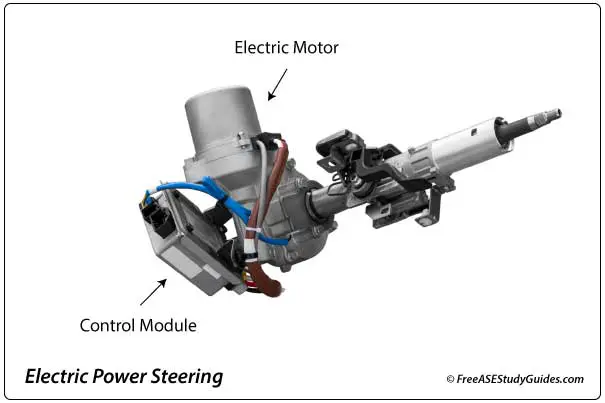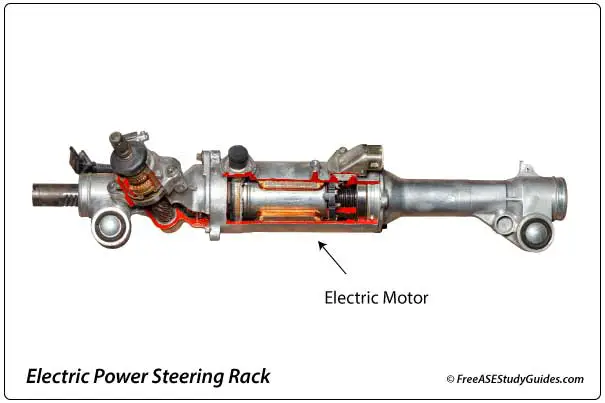Electric Power Steering

Electric power steering systems (EPS) use a reversible electric motor to assist in steering effort instead of hydraulic pressure. A control module receives information from sensors like the steering torque, steering angle, and speed sensors to control the voltage and direction of current sent to the motor.
More voltage is needed to assist steering effort when the driver travels slowly or negotiates parking maneuvers. As the vehicle travels faster, less assistance is required, and less voltage is needed. The EPS provides extra assistance to the driver while parking and less for a better road feel at highway speeds.

A warning light on the instrument panel indicates a problem with the system. First, inspect the steering system and the associated circuit before replacing electronic components. Trouble codes are typically manufacturer-specific and point the technician to the problem area. Next, test the sensor or actuator with an ohmmeter and a scan tool. Motor operation is bidirectional, and a fuse protects the system.

The motor may be attached to the steering column, under the instrument panel, or on the rack. Sometimes, the sensors are part of the unit, and some disassembly is required. However, these steering systems are becoming increasingly popular with vehicle manufacturers.